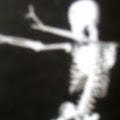Status update: I’ve been reading The Status of Birds in Britain & Ireland
Not sure why — except perhaps that I’m an instinctively rock ’n’ roll kinda guy — but I’ve spent quite a large part of the weekend perusing The Status of Birds in Britain & Ireland, David T Parkin and Alan G Knox’s rather awe-inspiring two-volume reference book. Actually, I do know why. It’s because I’ve always liked birds and have inherited from my father a slight ornithological bent.
In my childhood it was the usual stuff — walks in the fields with the family dog, my dad suddenly exclaiming “Look! See it? A kingfisher!” — but a bit more than this as well. We had an LP of birdsongs sitting in the stereogramme next to the Count Basie and Nat King Cole LPs (a record with a photo of a song thrush on the cover wasn’t, it’s true, the coolest thing in the world when you and all your teenage mates were getting into punk). One Christmas I was given the AA Book of British Birds as a present, a book that seemed amazingly lavish to me as a little kid and still seems pretty good now (I’ve still got it). Which, I’m sure you’ll agree, is all fascinating stuff. But back to the book.
The Status is a deeply serious work about birds (avifauna), compiled by two former chairs of the British Ornithologists’ Union. It’s a reference book first and foremost, but its extended introduction provides a deep plunge into the history of ornithology in Britain and Ireland (where birds are “probably the best studied in the world”), the science behind classification, evolution, migration and conservation. Frankly, some of it has gone over my head (like birds themselves, ha ha). But, while I may not fully comprehend the difference between a species and a sub-species, I admire the studied restraint and scientific rigour of the book. It was published in 2010 and is apparently the first major survey since 1971. In the intervening 39 years, climate change, new approaches to farming, and people sealing up the eaves on their houses or restoring barns (ie making them less-bird-friendly) have all affected birds, mostly negatively.
Several species are in sharp decline. Some have declined but are recovering, mostly because of new types of environment management (the wide un-cultivated strips at the perimeters of farmlands are one example, something encouraged by EU subsidies). Worryingly, some species are declining rapidly — and are even close to extinction — and ornithologists aren’t sure why. Those badly in trouble include marsh and willow tits, hawfinches, common nightingales and lesser-spotted woodpeckers. Plus, less well-known birds like red-necked phalaropes, which are on the conservation “red list”, along with corn crakes and cirl buntings. On the other hand, birds like the common buzzard (buteo buteo) have seen a “remarkable recovery” since around 1950 — a fascinating story in its own right, involving a reduction in gamekeepers and agricultural insecticides killing buzzards, and an increase in rabbit numbers providing them with more food (poor rabbits). In fact, these birds you hear very little about are now apparently the most common daytime bird of prey in the UK and Ireland — with about 50–60,000 pairs.
Recently, there’s been mainstream media coverage of global species extinction and the increasing loss of bio-diversity, but — slightly surprisingly — The Status actually isn’t a catalogue of doom. In a way, it’s the opposite. The sheer scale of the UK and Ireland’s ornithological/birding endeavour — from scientists, amateurs and those who take part in organised counts — is actually quite cheering. Even population declines in the UK don’t necessarily spell disaster for those species — sometimes they just reflect a wider shift in migration patterns (to do with climate or habitat change in Arctic or sub-Saharan zones).
Meanwhile, what you get from even brief exposure to the world of serious ornithology is a sense of how far removed most people are from this world. They may see birds every day, but they know next to nothing about them. Take something fairly “simple” — the number of bird species in Britain and Ireland, for example. Like most people, if you asked me to guess at this I’d probably mumble something like “I don’t know. About 80?” Apparently more than 580 have been recorded, including a large number of migrants — “summer visitors”, “winter visitors”, “passage migrants” and “vagrants” (irregular arrivals, ones here more or less by chance). Again, ask me or most people how many birds are unique to Britain and Ireland (endemic species) and I reckon they’d guess at around ten or 15, maybe 20 or 25. Turns out the answer is … one. The Scottish crossbill.
From Scottish crossbills to urban pigeons … Around the corner from where I live in east London I often see a white builder’s van with a pair of life-size pigeon designs on the back doors — about where you normally see a sign saying “No tools left in van overnight”. There’s no obvious link to anything else on the plain-white van — it seems to be a piece of pure bird-appreciating artwork (or at least I like to think it is). It’s a pleasing sight in our pigeon-despising, spikes-on-building-ledges culture. I don’t know if this London builder has read Parkin & Knox’s book, but I reckon he’d appreciate where it’s coming from. There’s barely a drop of sentiment or ornament in The Status, but it’s probably all the better for it. In the end birds need organised, science-backed infrastructural support more than casual appreciation. It’s fine to enjoy the flash of a darting kingfisher, but it’s better to map, understand and ultimately help defend the entirety of bird life.
